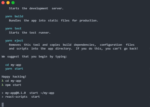On the outside, a conference on emojis—the little faces that have grown to replace simple online symbols such as =) and :P—might sound like a cute way to spend a weekend. But at the first annual Emojicon in San Francisco this past weekend, fun was just a small part of the larger technical picture.
To kick the event off, Mark Davis, cofounder of the Unicode Consortium, explained just what Unicode was and how emojis have been working their way into the standard for the past few years. He encouraged attendees and others in the tech industry to engage with the Unicode Consortium, and even mentioned that individuals and institutions can sponsor characters in the Unicode set.
“For most characters, we look at existing usage and we justify according to existing usage,” said Davis. “The most important ones are the ones people use to express their language, but we do have over 5,000 symbols as well. Emoji came in through the symbol route. The original emoji goal was to match the set that occurred on the Japanese systems, and it expanded from there.”
(Related: San Francisco MOMA has its own digital art)
While some might say that Unicode is pushing emojis worldwide, Davis would say that emojis are pushing Unicode worldwide. “The interesting thing is just how much emoji have pushed products to support Unicode well, and really updating their software to support the latest version 9. We are going toward 10 next June.”
One company that was eagerly awaiting the release of the Unicode 8.0 standard was Taco Bell. While it may not seem like an obvious pairing, Taco Bell engaged with the Unicode Consortium to push a taco emoji into the set two years ago. The effort was successful, and Taco Bell launched an online Twitter campaign using the emoji the day Unicode 8.0 support was pushed into Android devices and iPhones.
Ryan Rimsnider, senior manager of social strategy at Taco Bell, said that more than 500,000 people tweeted the taco emoji in its first few hours of availability, and the creative team at Taco Bell churned out thousands of images related to tacos via an application that mashed up emojis and premade images. The marketing team at Taco Bell generated hundreds of images for this campaign, and eventually spun it off into its own site: the Emoji Engine.
Emojis in context
One of the most important things about emojis, said Rachel Been, art director for Google on the Material Design team, is that the greatest emojis are open to interpretation. There is no one set meaning behind each emoji, and people can use them to mean whatever they want. Thus, emojis, like the eggplant and the peach, have taken on deeper, more lurid meanings, for example.
Those alternate meanings, however, are part of the charm of emojis. Paul Galloway, collections specialist at the New York Museum of Modern Art, spoke to Emojicon attendees about the museum’s acquisition of the original set of emojis from the DoCoMo phone from Japan in 1999.
“Designers help us navigate these technologies because it’s hard,” said Galloway. “Any new technology challenges our existing behavior. We’re all [angry] at the changes to iOS, but in a year we’ll all be used to it, and it’ll be second nature. We’re naturally conservative creatures, and designers are there to help us with the technology. In a way, they’re behaviorists.”
Galloway went on to say that the emoji acquisition was not as controversial as he had anticipated, as was the case for video games. But then, MoMA has always sparked controversy with its design collection, which began in the 1950s with a display of coil springs, airplane propellers and industrial equipment.
Galloway said the design collection at MoMA was built to take these items “out of the context of use and make them instead aesthetic objects. The goal there is to help us understand these things in a different way. In a museum, we’re doing it wrong in a way. For an oil painting, its natural habitat is a museum: That’s where it’s supposed to be. That is not the ideal place for architecture or design works. They are meant to be out there in the world, doing their function.”
That’s something software developers need to keep in mind: Emojis are in their native habitat when they’re in your applications. To this end, it’s important to make your applications aware of emojis. When doing sentiment analysis, for example, a single emoji can tell you a lot more than an entire line of text and a text analysis engine.
Thus, there are emoji support packages for Python and R, as well as other languages. Alolita Sharma, a member of the board of directors Unicode Consortium and an engineer at PayPal, told conference attendees about Twemoji, the open-source set of emojis created by Twitter. This set is available via a Creative Commons license, and can be implemented in just about any application, free of charge.
That’s not always the case for big businesses. Facebook, for example, had to generate its own emojis when it decided to revise the like button into a set of images. Andy Chung, former product manager at Facebook and current independent designer, headed up the team responsible for this change.
From the Garden of Emoji Delights, by Carla Gannis
Work began in 2015 when he and another designer worked up a prototype using Course Composer in two weeks. While the prototype was built purely for its visual design and could not be turned into an actual application, he said it got corporate buy-in and got the project fully funded and staffed.
After that, Chung and the team built revisions of their ideas, then rolled out an initial implementation in Ireland, Chile and Spain. These countries, he said, have a much higher rate of insular friendships and lower instances of out-of-country friends.
Of the six emojis they put into the original implementation, all remain except for the one called “Yay.” It was consistently unused in all three test countries for reasons Chung was unable to grasp.




